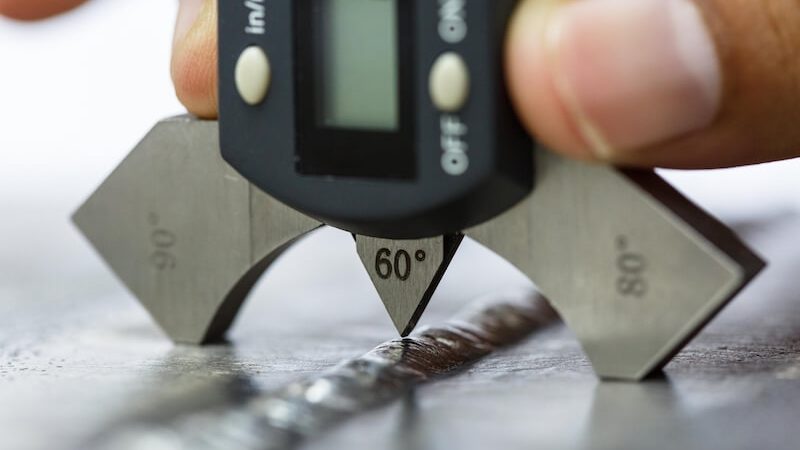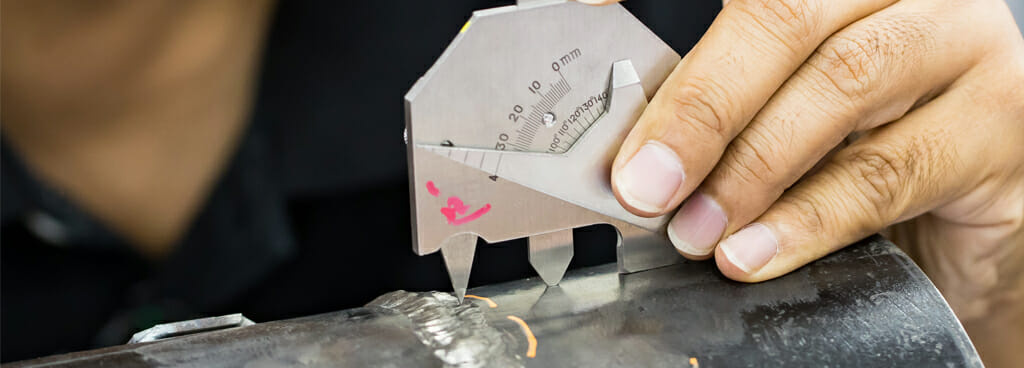Top Benefits of Reliable Welding Inspection Milwaukee in Construction
An Extensive Checklist for Effective Welding Evaluation Practices
In the realm of welding, the stability of frameworks is vital, demanding an extensive technique to assessment practices. An extensive checklist works as a vital device in making certain adherence to sector criteria, encompassing important pre-welding, in-process, and post-welding assessments. By systematically addressing product confirmation, weld high quality, and thorough documentation, companies can dramatically boost security and performance. However, what specific components should be focused on in each phase to achieve optimum results? Checking out these vital components can produce insights that profoundly effect welding operations.
Comprehending Welding Standards
Welding criteria play a critical role in making certain the high quality and safety and security of welded frameworks and parts. These standards establish the standards for materials, treatments, testing, and inspection, consequently providing a framework for regular quality assurance in welding procedures. Various companies, consisting of the American Welding Society (AWS), the International Organization for Standardization (ISO), and the American Culture of Mechanical Designers (ASME), have developed comprehensive requirements that control different aspects of welding.
Comprehending welding criteria is vital for specialists in the field, as adherence to these guidelines lessens the threat of defects and failures in welded joints. These standards cover certain needs for weld quality, including acceptable tolerances, the type of welding techniques to be made use of, and the credentials required for welders and examiners.

Pre-Welding Assessment Steps
Prior to any welding procedure commences, a complete pre-welding inspection is important to determine potential problems that might compromise the top quality of the weld. This initial step works as a vital structure for guaranteeing conformity with applicable welding codes and requirements.
The primary step in the pre-welding inspection is to confirm the products being used. This includes monitoring for the proper type and quality of metals as defined in the task documentation. Next, it is critical to inspect the fit-up of the elements to ensure proper alignment and joint setup. Imbalance can bring about inadequate penetration and structural weaknesses.
In addition, examining the cleanliness of the surface areas is essential; impurities such as paint, corrosion, or oil can negatively influence the top quality of the weld. Following this, a thorough assessment of the welding equipment should be carried out, guaranteeing that it is calibrated and in good working problem.
Last but not least, assessing the credentials of the welding employees is important. Welders should possess the necessary qualifications and experience to execute the details welds needed for the job. By adhering to these pre-welding evaluation steps, the chance of issues and failures in the final weld can be significantly lowered.

In-Process Evaluation Strategies
In-process evaluation strategies play a vital function in ensuring the integrity and high quality of welds as they are being executed. These methods allow examiners to identify problems or deviations from specifications in genuine time, therefore guaranteeing and avoiding costly fixings adherence to style demands.
One secret method involves aesthetic examination, where examiners assess the weld bead for harmony, infiltration, and correct account. This can be complemented by the use assesses to gauge weld measurements, making certain compliance with predetermined tolerances. Furthermore, the application of non-destructive testing (NDT) techniques, such as ultrasonic testing or magnetic bit testing, during the welding process can reveal subsurface defects that may not be visible externally.
Another essential aspect is keeping an eye on welding specifications, including voltage, amperage, and travel speed. Consistency in these criteria is critical for achieving optimum weld top quality. Recording these specifications during the welding operation provides a deducible document for future recommendation.
Training personnel in correct inspection techniques and making use of appropriate devices improves the efficiency of in-process evaluations. By integrating these methods, organizations can achieve greater high quality welds, decrease rework, and ultimately make certain the security and reliability of welded frameworks.
Post-Welding Top Quality Checks
Complying with the conclusion of welding procedures, post-welding quality checks are critical to validate discover this that the welds meet all defined needs and requirements. These checks are important for ensuring the stability and sturdiness of the bonded joints. The evaluation process normally begins with an aesthetic examination, analyzing for surface flaws such as cracks, porosity, or incomplete fusion.
Consequently, non-destructive testing (NDT) methods, such as ultrasonic screening, radiographic screening, or magnetic particle screening, may be utilized to detect interior flaws that are not visible to the nude eye. Each method has its distinct benefits and is selected based upon the weld's location, material kind, and the nature wikipedia reference of the application.
Evaluating the mechanical homes of the weld, including tensile stamina and ductility, can offer further guarantee of efficiency under operational conditions. On the whole, detailed post-welding inspections are essential for keeping adherence, safety, and efficiency to regulatory and market standards.
Paperwork and Coverage
Exactly how can efficient paperwork and reporting enhance the welding examination process? Precise documentation and thorough reporting are crucial components that make sure the integrity and high quality of welding procedures. Welding Inspection Milwaukee. They function as an official record of assessment searchings for, helping with liability and traceability in compliance with market criteria

A well-structured reporting system makes it possible for inspectors to clearly interact any kind of inconsistencies, locations, or non-conformances calling for renovation. This openness promotes an environment of constant renovation, as stakeholders can readily evaluate past efficiency and carry out rehabilitative activities.
In addition, effective documentation includes comprehensive records such as welding procedure specifications (WPS), welder qualifications, and examination checklists. These elements provide a framework for evaluating weld quality and adherence to developed standards. In the occasion of disagreements or top quality concerns, detailed documents works as a reliable referral, lowering obscurity and securing all celebrations included.
Lastly, maintaining arranged documents helps in training and certifying employees, making certain that market best practices are upheld. Inevitably, careful paperwork and reporting not only boost the welding assessment process but also add to the general security and reliability of bonded structures.

Final Thought
In final thought, an extensive checklist for effective welding inspection practices is vital for making certain top quality and safety and security in bonded frameworks. Adherence to established welding standards, meticulous pre-welding inspections, strenuous in-process examinations, and complete post-welding high quality checks collectively contribute to the honesty of welded joints.
Welding standards play an essential duty in making certain the high quality and safety of bonded frameworks and components. Various companies, consisting of the American Welding Culture (AWS), the International Organization for Standardization (ISO), and the American Culture of Mechanical Designers (ASME), have created thorough requirements that govern various aspects of welding.
Adhering to the conclusion of welding operations, post-welding high quality checks are vital to confirm that the welds satisfy all specified criteria and demands - Welding Inspection Milwaukee.In conclusion, a thorough checklist for efficient welding inspection techniques is vital for ensuring high quality and safety in welded frameworks. Adherence to established welding requirements, meticulous pre-welding assessments, extensive in-process examinations, and detailed post-welding quality checks collectively a fantastic read add to the integrity of welded joints